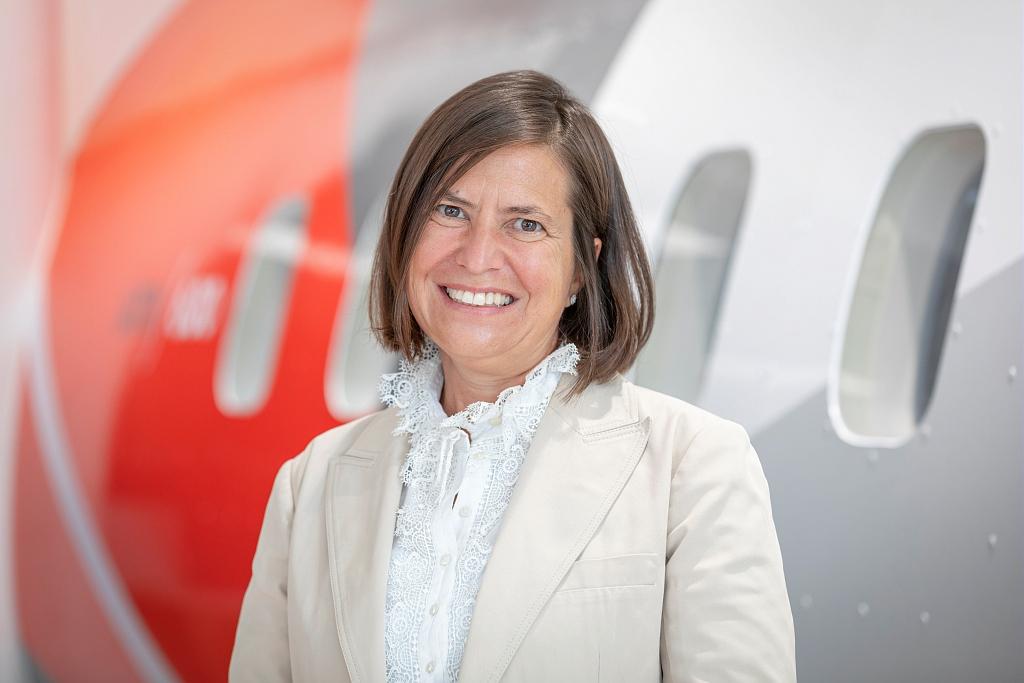
Nathalie Tarnaud Laude took over as ATR CEO on Sept. 20, 2022.
LYON—ATR delivered a mere 25 regional turboprops in 2022 but CEO Nathalie Tarnaud Laude is nevertheless planning on progressively increasing the OEM’s annual output to 80 aircraft.
The decline in ATR deliveries is another piece of bad news for the sector, which has seen questions raised about the relevance of regional turboprops.
Supply chain issues seriously hit ATR’s final assembly line in Toulouse, Tarnaud Laude told Aviation Daily in an interview late March. The widespread difficulty in hiring workers compounded the problem. Without those challenges, around 30 aircraft would have been delivered, similar to 2021’s 31 deliveries, she said.
But those numbers were still low compared to the previous decade. Between 2010-19, annual deliveries stood above 50. Since the peak of 2015, when ATR handed over 88 aircraft, there was a consistent decline through 2019. The nine deliveries in 2020, during the worst period of the COVID-19 crisis, must be treated as an exception. But since then, the post-2015 downward trend has continued.
Tarnaud Laude has led ATR since Sept. 20, 2022. Making essentially the same arguments as her predecessor deployed in the years before, she predicts a rosy future for ATR’s products. Replacement needs call for 1,500 new turboprops over the next 20 years, she said. With the recently certified Pratt & Whitney PW127XT engine, the ATR 72-600’s carbon footprint is 45% smaller than that of a comparable jet.
While the crises in supply chain and recruitment will continue, Tarnaud Laude said ATR is nevertheless preparing to deliver about 40 aircraft. Securing enough orders to justify a production ramp-up to roll out 80 aircraft per year in the coming years is achievable, she added.
“At some point, the sustainability theme was not so dominant,” Tarnaud Laude said. “For two or three years, we have been seeing a change of paradigm, where the benefits of the turboprop technology are recognized. And ATR is the only airframer to have continued to manufacture turboprops.” De Havilland Canada is yet to restart production of the Dash 8-400.
The market is recovering, Tarnaud Laude asserted. Last year, ATR earned record revenues in support and services. In Asia, Chinese passengers are allowed to travel again, which will favorably impact traffic all over the region. Asia is where more than 40% of the global ATR fleet is operated.
“ATR is well placed to capture a large portion of the growing demand,” Tarnaud Laude said.
Asked about Embraer’s decision to postpone the launch of a new turboprop, she suggested the proposed aircraft would have had a hard time competing with ATR’s products. “Embraer would have been coming to the market with an aircraft using same-generation technologies, which would have been challenging,” she said.
“But we do not think we will stay alone in the market,” the CEO added. Embraer and start-up companies, such as Heart Aerospace, are seen as potential rivals.
The ATR EVO concept, which aims at a 20% fuel burn reduction with a mild hybrid-electric propulsion system, is still at the feasibility study stage, she said. The result of the analysis is expected at the end of the year.
